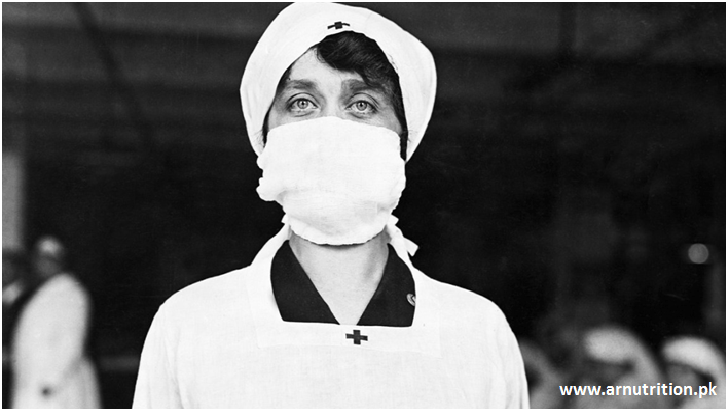Symptoms | Causes | Risk Factors | Diagnosis | Treatment | Complications Prevention | Coronavirus Types | Outlook
Not Sure You Have COVID-19? Here Are the Symptoms for Coronavirus, Flu, And Allergies

Weakness and body aches are symptoms of both the flu and the novel coronavirus, yet the flu usually doesn’t cause shortness of breath. Getty Images
- Experts note that the novel coronavirus, the flu, and allergies have various symptoms.
- The primary symptoms of the novel coronavirus are fever, tiredness, dry cough, and shortness of breath.
- Allergies have more incessant symptoms and incorporate sniffling, wheezing, and coughing.
- The flu has symptoms like the novel coronavirus, for example, fever and body aches, yet influenza usually doesn’t cause shortness of breath.
In the event that you have a runny nose or bothersome eyes, it doesn’t mean you have the novel coronavirus.
owever, in the event that you have a dry cough, weariness, and a fever, you may have COVID-19.
On the other hand, it could also be occasional flu.
“Not all symptoms are made equally. While it may appear as though you have coronavirus, you may essentially be encountering regular allergies or influenza,” Lindsey Elmore, PharmD, a board-affirmed pharmacotherapy expert and host of “The Lindsey Elmore Show,” told Arnutrition.
ARNUTRITION’S CORONAVIRUS COVERAGE
Remain educated with our live updates about the current COVID-19 outbreak. Also, visit our coronavirus center point for more data on how to get ready, exhortation on prevention and treatment, and master proposals.
“There are many symptoms of cold, flu, and COVID that are comparable, and it may be hard to recognize,” included Ramzi Yacoub, PharmD, boss drug store official of the remedy reserve funds administration SingleCare. “They’re all caused by viruses, however extraordinary viruses cause every one of these infections.”
“However, one key distinction between the three is a side effect of coronavirus is shortness of breath,” Yacoub told Arnutrition. “Shortness of breath is a common indication of COVID-19 which happens preceding the advancement of pneumonia.
Generally, the flu or a virus doesn’t cause shortness of breath except if it has advanced to pneumonia, in which case you’ll also need to contact your healthcare supplier.”
Dr. Subinoy Das, boss medical official at Tivic Health, said the common virus once in a while causes shortness of breath after fever creates.
“Influenza mimickes COVID-19 intently, yet the shortness of breath isn’t usually as serious for what it’s worth with COVID-19,” Das told Arnutrition.
With COVID-19, shortness of breath regularly happens 5 to 10 days after the primary indication of fever, Das said.
Sniffling Isn’t An Indication
Sniffling, runny nose, facial torment, postnasal dribble, and irritated eyes are common symptoms of allergies or the common virus. Pakistani Chat Rooms, Sms Poetry, Sms Poems, Indian Chat Rooms
In any case, they’re not run of the mill of COVID-19.
“The most common symptoms of COVID-19 are fever, tiredness, and dry cough,” as indicated by the World Health Organization (WHO)Trusted Source. “Some patients may have aches and agonies, nasal blockage, runny nose, sore throat, or loose bowels.”
“In a report from China of more than 1,000 patients, nasal blockage was seen in just one out of every 20 patients,” Dr. Kristine S. Arthur, an internist at MemorialCare Medical Group in Laguna Woods, California, told Arnutrition.
COVID-19 symptoms usually seem 2 to 14 days after introduction.
However, “Some people become tainted yet don’t build up any symptoms and don’t feel unwell,” as per the WHO.
These people can still transmit the virus to everyone around them, even in the event that they don’t feel sick.
Allergies Have Constant Symptoms
COVID-19, like the flu or common cold, is an intense sickness, which means people feel fine until symptoms fire showing up.
Allergies, then again, “are usually incessant, giving symptoms now and again for quite a long time, months, or even years,” Dr. David M. Cutler, family medication doctor at Providence Saint John’s Health Center in Santa Monica, California, told Arnutrition.
Specialists also noticed that, in many pieces of the nation, it’s not allergy season yet.
“Allergies should not cause a fever or body aches,” Arthur said. “Generally, [there is] no cough except if you have a ton of nasal waste.”
Allergies also may cause wheezing, she included, especially in people with asthma.
“Allergy symptoms will in general change with the earth: intensifying with introduction to residue, dust, or creature dander, though chilly symptoms will in general persevere paying little mind to time of day, climate, region, or other ecological components,” Cutler said.
Also, as with COVID-19, “Colds are more likely to have summed up symptoms like fever, cerebral pain, and body aches, though allergies usually influence just the respiratory tract,” Cutler said. “Allergy symptoms will in general improve with antihistamine and other allergy-explicit prescription. Colds are more likely to react to decongestants, acetaminophen, fluids, and rest.”
In Spite Of Symptoms, It’s Not The Flu
COVID-19 isn’t the flu.
As one of a class of pathogens known as coronaviruses, it’s actually more firmly identified with the common cold than the regular flu.
Latest HealthCare Medical News, World Live Updates, CoronaViRuS Live New Updates
However, regardless of some cover, the commonplace symptoms of COVID-19 are more like the flu (fever, cough, sore throat, runny or stuffy nose, muscle or body aches, headaches, weariness) than the common cold (runny or stuffy nose, sore throat, cough, clog, slight body aches, mellow migraine, wheezing, poor quality fever, disquietude).
“As far as separating between flu and COVID-19, it tends to be practically difficult to recognize,” Dr. Jake Deutsch, fellow benefactor and clinical executive of Cure Urgent Care habitats and Specialty Infusion in New York. “That is the reason people are prescribed to have flu immunizations so it can in any event… limit the risk of flu considering everything else. Fevers, body aches, coughing, wheezing could all be equally ascribed to them both, so it really implies that if there’s a worry for flu, there’s a worry for COVID-19.”
On the off chance that you have a mellow instance of COVID-19, the flu, or a cool, treatment is intended for the board of symptoms, said Cutler.
“Generally, acetaminophen is prescribed for fevers,” he said. “Cough drops and cough syrups can also help keep bodily fluid discharges more slender. On the off chance that there is related nasal blockage, antihistamines may be valuable.”
Cases Can Be Life Undermining – The Symptoms For Coronavirus
Gentle cases of COVID-19 are thought to last roughly 2 weeks, said Cutler.
“Luckily, by far most of cases are mellow,” he said.
Nearly nobody passes on of the common virus. What’s more, most regular allergies are more irritating than perilous.
Influenza, however, causes between 12,000 and 61,000 deathsTrusted Source for each year in the United States.
COVID-19 can possibly cause even more fatalities because it’s effortlessly transmitted, the populace comes up short on any insusceptibility to the infection, and intricacies in genuine cases may incorporate life undermining pneumonia.
In case you’re feeling sick or you think you have been presented to COVID-19, you should self-isolate for in any event 2 weeksTrusted Source to prevent additionally spread of the ailment, as indicated by the Centers for Disease Control and Prevention (CDC).
Extreme symptoms of COVID-19 that require prompt medical consideration incorporate trouble breathing, tenacious agony or weight in the chest, disarray or failure to stir, or pale blue lips or face, the last showing a lack of oxygen in the circulatory system, as indicated by the CDC.
“Around one out of every six people who gets COVID-19 turns out to be truly sick and creates trouble breathing,” the WHOTrusted Source said. “More seasoned people and those with hidden medical issues like hypertension, heart issues, or diabetes, are more likely to create genuine disease.”














